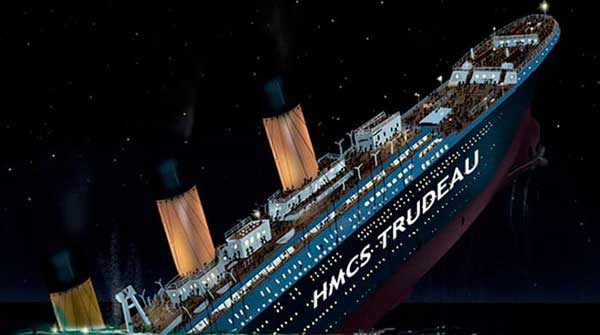 A ship without an anchor risks drifting into stormy waters. The same is true of governments that borrow and spend. More than six months into the global pandemic, it’s time for the Trudeau government to figure out what safeguards to put in place to ensure our temporary plunge into record deficits doesn’t become a permanent problem.
A ship without an anchor risks drifting into stormy waters. The same is true of governments that borrow and spend. More than six months into the global pandemic, it’s time for the Trudeau government to figure out what safeguards to put in place to ensure our temporary plunge into record deficits doesn’t become a permanent problem.
Unfortunately, the government doesn’t have a great record when it comes to fiscal anchors. In its 2015 election platform, the Liberal party proposed two: balancing the budget by 2019 and reducing the federal debt-to-GDP ratio to 27 percent in the same year. Suffice it to say, the government failed on both counts. And did so well before the pandemic hit.
But the pandemic did hit and now, with a deficit that could reach as high as $400 billion, some kind of guidance isn’t just a good idea; it may be essential to keeping the federal government’s borrowing costs low.
Ratings agencies have warned the government needs to produce a plan laying out how it intends to shrink the deficit. One agency has already stripped Canada of our coveted AAA status and more could follow. That matters. Lower ratings mean higher borrowing costs and higher borrowing costs mean either higher taxes or lower spending on programs.
Borrowing costs are already a big deal. Last year, Ottawa spent $24.5 billion just to cover the interest on the federal debt. That’s more than the provincial budgets of Nova Scotia and New Brunswick combined. Even a fractional uptick in the government’s cost of borrowing would mean billions more in taxpayer money diverted to interest payments and away from program spending.
So the bottom line is clear: there has to be some limit to borrowing. The only debate is over what metric Ottawa should choose to best demonstrate that its plans are moored to some kind of anchor. There are a number of options on the table.
The most obvious is a balanced budget. The challenge with this measure is the time horizon. Opposition Leader Erin O’Toole has suggested he would aim to eliminate the deficit in about a decade. The Trudeau government could take a similar approach — but actually stick to it this time. There is no question that balancing the budget will be a big challenge but providing a concrete plan to eliminate the deficit over the medium term would send a strong signal that increased spending will not continue indefinitely.
There is also the federal debt-to-GDP ratio, which has leapt from approximately 31 percent to nearly 50 percent this year. Keeping the ratio stable and then reducing it over time represents a weaker anchor than a balanced budget — especially since Ottawa’s debt-to-GDP ratio is only half the story. Although the federal government does not explicitly backstop provincial debt, as a practical matter it is hard to see how it would not be forced to step in if a province were at risk of default. And among all countries with AAA status, Canada has the largest component of government debt carried by subnational governments.
Finally, the government could also freeze or limit the growth of program spending. The era of routine departmental budget increases and hefty raises in labour contracts is over. The government simply has less money than it used to and will need to spend what it has much more carefully. A ceiling on the growth of program spending would both signal it recognizes constraints and also provide some predictability about the future path of expenditures.
Finance Minister Chrystia Freeland has indicated that a fiscal update is coming later this fall. It must include an anchor to guide federal budgeting for the future. The best anchor would be a concrete plan to get back to a balanced budget. But failing to include any anchor at all would be nothing short of irresponsible. Without it, we risk drifting into an angry, endless sea of red.
Aaron Wudrick is national director of the Canadian Taxpayers Federation.
Aaron is a Troy Media contributor. Why aren’t you?
The views, opinions and positions expressed by columnists and contributors are the author’s alone. They do not inherently or expressly reflect the views, opinions and/or positions of our publication.


